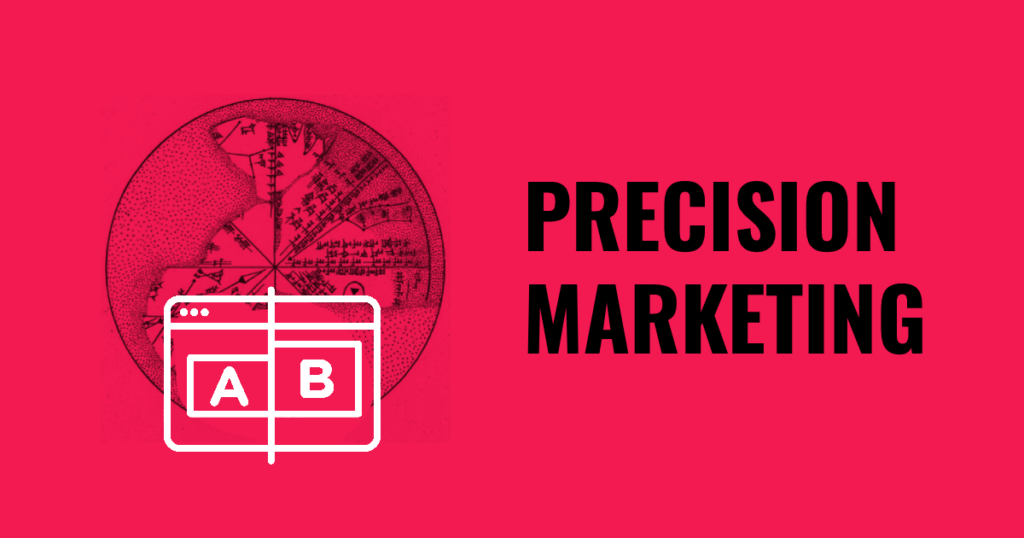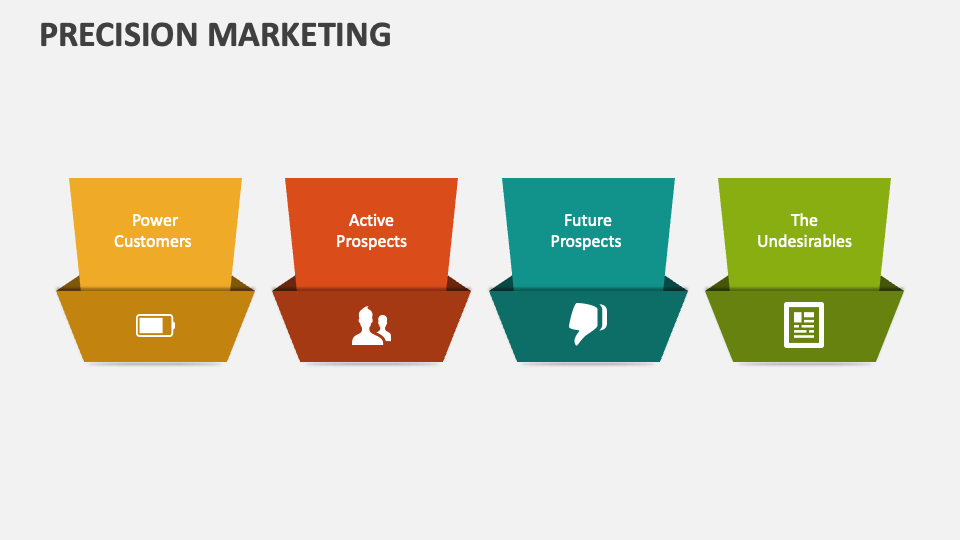Introduction of Precision Marketing
Precision marketing is a strategy that uses data and technology to deliver highly targeted and personalized messages to specific segments of an audience. This approach allows businesses to connect with their customers more meaningfully and effectively, resulting in higher conversion rates and increased ROI. This article will explore the definition of precision marketing, its importance, and key concepts related to targeting and segmentation, personalization, channel selection, measurement, and optimization.
What is Precision Marketing
Precision marketing is a data-driven approach that leverages customer insights and technology to deliver highly targeted and personalized communications to specific segments of an audience. By using data to segment and target audiences, businesses can create messages that resonate with particular groups of customers, resulting in higher engagement and conversion rates.
Importance of Precision Marketing
The traditional “spray and pray” approach to marketing, where businesses send out generic messages to a broad audience, is becoming increasingly ineffective in today’s digital landscape. Customers are bombarded with overwhelming marketing messages, and they are becoming increasingly savvy at tuning out irrelevant content. Precision marketing, on the other hand, allows businesses to connect with their customers more personally and meaningfully, resulting in higher engagement and conversion rates. Additionally, precision marketing helps companies get a better investment return by reaching only the most receptive and profitable customers.
Precision marketing also allows businesses to adapt to the ever-changing digital landscape. With the increasing amount of data and technology available, companies can continuously fine-tune their targeting and personalization strategies to stay ahead of the competition.
In conclusion, precision marketing is becoming increasingly crucial for businesses looking to connect with their customers more meaningfully and effectively. By using data and technology to deliver targeted and personalized communications, companies can increase engagement, conversion rates, and ROI.
Targeting and Segmentation
Targeting and segmentation are critical concepts in precision marketing that involve using data and customer insights to define and segment specific audiences. By understanding and segmenting your audience, you can create more effective and personalized communications that resonate with particular groups of customers. This section will explore defining target audiences, segmenting audiences, and identifying customer needs and behaviors.
Defining Target Audiences
The first step in precision marketing is to define your target audience. This involves identifying the specific group of customers that you want to reach with your marketing efforts. To determine your target audience, you must consider demographics, psychographics, location, and purchase history. By identifying the characteristics and needs of your target audience, you can create more relevant and effective communications.
Segmenting Audiences
Once you have defined your target audience, the next step is to segment that audience into smaller groups. Segmentation allows you to create more targeted and personalized communications by grouping customers with similar characteristics or needs. Many ways to segment an audience include demographic, psychographic, and behavioral segmentation. By understanding each segment’s unique needs and features, you can create communications that resonate with each group.
Identifying Customer Needs and Behaviors
To create compelling and personalized communications, it is essential to understand the needs and behaviors of your customers. This can be done by analyzing customer data, such as purchase history, browsing behavior, and demographics. By understanding the needs and behaviors of your customers, you can create more relevant and effective communications that drive conversions.
In conclusion, targeting and segmentation are critical concepts in precision marketing that involve using data and customer insights to define and segment specific audiences. By understanding and segmenting your audience, you can create more effective and personalized communications that resonate with particular groups of customers, resulting in higher engagement and conversion rates.
Personalization
Personalization is a crucial aspect of precision marketing involving customer data and insights to create customized communications and experiences. Businesses can increase engagement and conversions by personalizing messages and content to match individual customers’ unique needs and preferences. In this section, we will explore the process of customizing communications, creating relevant content, and leveraging data and analytics to improve personalization efforts.
Customizing Communications
Personalization begins with customizing communications to match customers’ unique needs and preferences. This can be done by using data and insights to create personalized email campaigns, targeted ads, and customized content. Businesses can increase engagement and conversions by tailoring communications to individual customers’ specific interests and behaviors.
Creating Relevant Content
Creating relevant content is another essential aspect of personalization. By understanding the needs and interests of individual customers, businesses can create content specifically tailored to their preferences. This can include blog posts, videos, and social media content that address specific topics or provide solutions to customer needs.
Leveraging Data and Analytics
To improve personalization efforts, businesses must leverage data and analytics to understand customer needs and behaviors more deeply. By tracking customer data and analyzing behavior patterns, companies can gain insights into customer preferences, conditions, and pain points. This information can then be used to create more relevant and effective communications and content.
In conclusion, personalization is a crucial aspect of precision marketing involving customer data and insights to create customized communications and experiences. Businesses can increase engagement and conversions by tailoring messages and content to match individual customers’ unique needs and preferences. Leveraging data and analytics is essential to improve personalization efforts and gain a deeper understanding of customer needs and behaviors.
Channel Selection
In precision marketing, channel selection is selecting the most appropriate communication channels to reach target audiences. Different drains have different characteristics and benefits, and choosing the right track can significantly impact the success of marketing efforts. In this section, we will explore the different types of channels available, the criteria for selecting channels, and the importance of testing and evaluating channel performance.
Types of Channels
Various channels are available for reaching target audiences, including online and offline channels. Online channels include email, social media, and digital advertising, while offline channels include print advertising, direct mail, and events. Each channel has unique characteristics and benefits, and selecting the right track depends on the target audience, marketing goals, and budget.
Criteria for Selecting Channels
When selecting channels, businesses should consider several criteria, including:
- Audience reach: how well a channel reaches the target audience
- Audience Engagement: how well a channel engages the target audience
- Cost-effectiveness: how cost-effective a channel is compared to others
- Scalability: how easy it is to scale up or down the use of a channel
- Integration: how well a channel integrates with other marketing efforts
Testing and Evaluating Channel Performance
Once channels have been selected, testing and evaluating their performance is essential. This can be done by setting up A/B tests to compare the performance of different media, tracking metrics such as click-through rates and conversion rates, and soliciting customer feedback. By testing and evaluating channel performance, businesses can identify which channels are most effective and make adjustments as necessary.
In conclusion, channel selection is an essential aspect of precision marketing that involves selecting the most appropriate communication channels to reach target audiences. Different drains have different characteristics and benefits, and choosing the right track can significantly impact the success of marketing efforts. It is essential to consider the audience reach, engagement, cost-effectiveness, scalability, and integration of different channels and regularly test and evaluate their performance to optimize marketing efforts.
Measurement and Optimization
In precision marketing, measurement and optimization refer to collecting and analyzing data to track the performance of marketing efforts and then making adjustments to improve results. By regularly monitoring key performance indicators (KPIs) and evaluating customer feedback, businesses can identify areas for improvement and make data-driven decisions to optimize their marketing efforts. This section will explore the importance of measurement and optimization, collecting and analyzing data, and best practices for making adjustments to improve results.
Importance of Measurement and Optimization
Measurement and optimization are essential to the success of precision marketing efforts. By collecting and analyzing data, businesses can gain insights into the performance of their marketing efforts and identify areas for improvement. This information can then be used to make data-driven decisions and optimize marketing efforts to achieve better results.
Collecting and Analyzing Data
The process of collecting and analyzing data involves setting up tracking and measurement systems, setting up KPI’s and evaluating customer feedback. This data can include website traffic, conversion rates, customer demographics, and feedback from surveys and customer service interactions. By analyzing this data, businesses can identify patterns and trends and gain insights into the performance of their marketing efforts.
Best Practices for Optimization
Once data has been collected and analyzed, businesses can use this information to adjust and optimize their marketing efforts. Best practices for optimization include:
- Setting clear goals and objectives
- Regularly monitoring and analyzing data
- Testing and experimenting with different strategies and tactics
- Continuously seeking customer feedback
- Making data-driven decisions
In conclusion, measurement and optimization are essential to the success of precision marketing efforts. By regularly monitoring key performance indicators and evaluating customer feedback, businesses can identify areas for improvement and make data-driven decisions to optimize their marketing efforts. Best practices for optimization include setting clear goals and objectives, regularly monitoring and analyzing data, testing and experimenting with different strategies and tactics, continuously seeking customer feedback, and making data-driven decisions.
Conclusion
Precision marketing is a targeted and personalized approach to marketing that uses data and technology to reach the right customers with the right message at the right time. This approach is based on the idea that businesses can create more effective and efficient marketing campaigns by understanding customer behavior and preferences. This article explores the critical components of precision marketing, including targeting and segmentation, personalization, channel selection, and measurement and optimization.
Targeting and Segmentation
Targeting and segmentation involve identifying and segmenting the target audience based on their demographics, behaviors, and interests. Businesses can create more relevant and effective marketing campaigns by understanding the target audience.
Personalization
Personalization involves creating customized messages and experiences for individual customers based on their behavior and preferences. Personalization can be achieved through various techniques, such as dynamic content, website personalization, and personalized email campaigns.
Channel Selection
Channel selection is selecting the most appropriate communication channels to reach target audiences. Different drains have different characteristics and benefits, and choosing the right track can significantly impact the success of marketing efforts.
Measurement and Optimization
Measurement and optimization refer to collecting and analyzing data to track the performance of marketing efforts and then making adjustments to improve results. By regularly monitoring key performance indicators (KPIs) and evaluating customer feedback, businesses can identify areas for improvement and make data-driven decisions to optimize their marketing efforts.
In conclusion, precision marketing is a powerful approach that can help businesses create more effective and efficient marketing campaigns by understanding customer behavior and preferences. By focusing on targeting and segmentation, personalization, channel selection, and measurement and optimization, businesses can increase the relevance and impact of their marketing efforts and achieve better results. It is essential to regularly monitor and evaluate the performance of marketing efforts and make adjustments as necessary to optimize performance and achieve desired results.
F.A.Q
What is precision in marketing research?
Precision in marketing research refers to the degree of accuracy and specificity of the research data and the methods used to collect it. This can include the sample size, the detail level in the data, and the methods used to ensure the data is unbiased and representative of the target population. In precision marketing research, researchers use advanced statistical techniques and data analysis methods to ensure that the data is accurate, reliable, and actionable, which helps businesses make data-driven decisions and optimize their marketing efforts.
What are the four types of marketing?
There are various ways to categorize the different types of marketing, but one common framework is to divide them into four main categories:
- Product marketing: This type focuses on promoting a specific product or product line. It includes market research, product development, pricing strategies, and advertising campaigns.
- Place marketing: Also known as distribution or channel marketing, this type focuses on getting a product to the right place at the right time. It includes activities such as logistics, inventory management, and channel management.
- Promotion marketing: This type of marketing focuses on communicating with potential customers and building relationships. It includes advertising, public relations, personal selling, and sales promotions.
- Price marketing: This type of marketing focuses on determining the most appropriate pricing strategy for a product or service. It includes cost analysis, pricing research, and pricing strategy development.
It’s important to note that these types of marketing are not mutually exclusive and often work together in a comprehensive precision marketing strategy.





